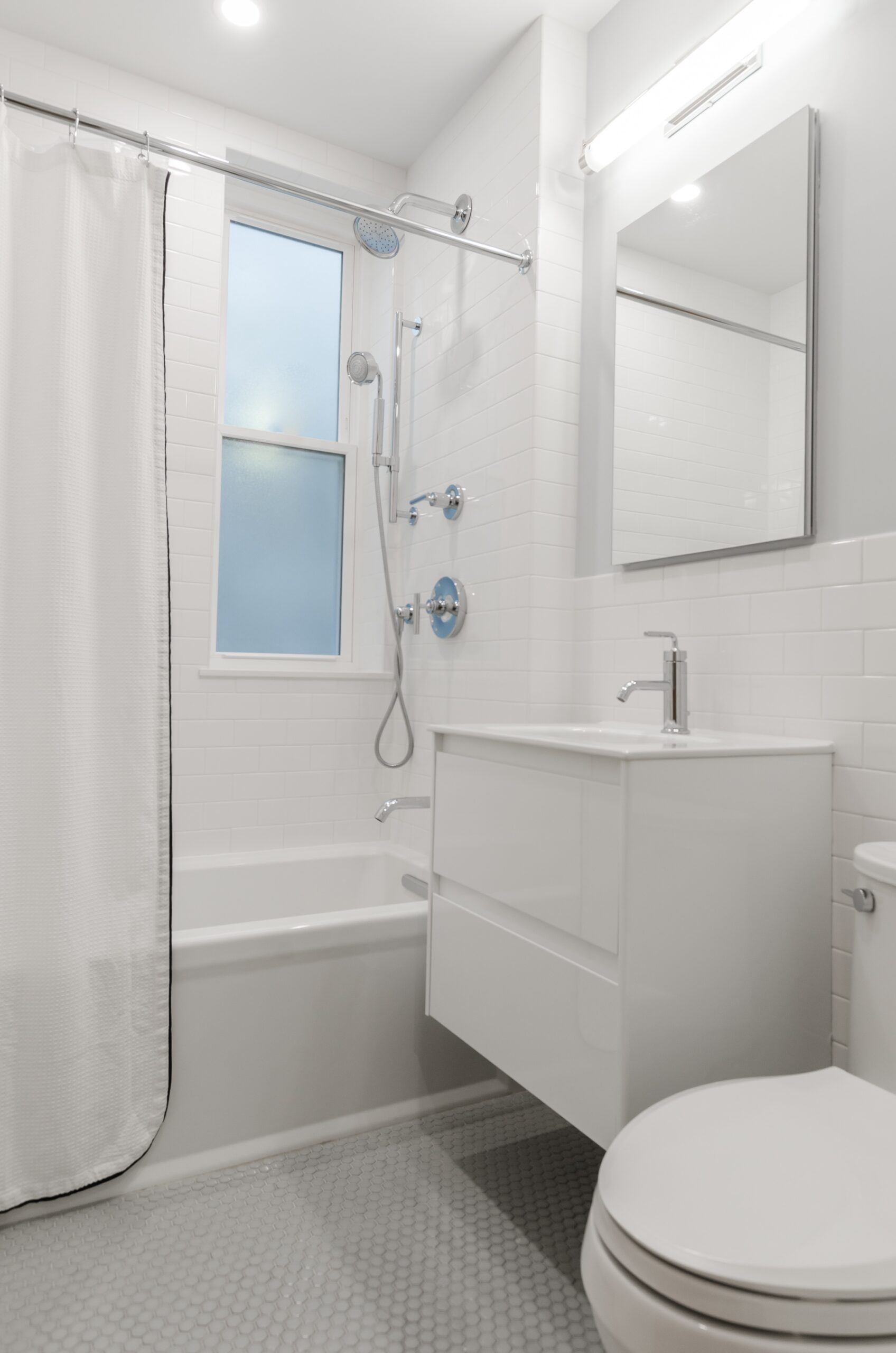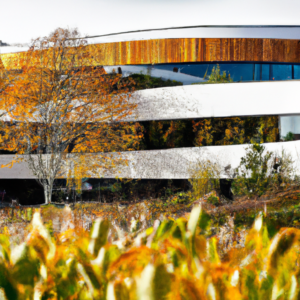How Can I Make My Bathroom Eco-friendly: Introduction
Ever asked the question, “How can I make my bathroom eco-friendly?” With a few simple changes, you can transform your bathroom into a sustainable space that reduces your carbon footprint and promotes a greener lifestyle. From low-flow toilets and faucets to energy-efficient lighting and eco-friendly cleaning products, this article will guide you through practical tips and ideas to create an environmentally conscious bathroom that not only saves you money but also contributes to a healthier planet. So, let’s dive in and explore how you can make your bathroom more eco-friendly.
Choosing eco-friendly materials and products
Eco-friendly flooring options
When looking to make your bathroom more eco-friendly, one of the first things to consider is your choice of flooring. Traditional bathroom flooring options like ceramic tiles and vinyl tend to be energy and resource-intensive to produce. Instead, opt for eco-friendly alternatives like bamboo flooring, which is a sustainable and renewable resource. Another option is cork flooring, which is made from the bark of cork oak trees and is highly sustainable. Both bamboo and cork flooring are durable, easy to clean, and provide a stylish and eco-friendly solution for your bathroom.
Low-flow or dual-flush toilets
Toilets are among the highest water-consuming fixtures in a home, so opting for low-flow or dual-flush toilets can make a significant impact on water conservation. Low-flow toilets use less water per flush compared to traditional toilets, while dual flush toilets have separate buttons for flushing liquid waste or solid waste, allowing you to choose the appropriate amount of water needed. By installing these types of toilets, you can reduce your water consumption and contribute to conserving this precious resource.
Water-efficient faucets and showerheads
Another way to conserve water in your bathroom is by using water-efficient faucets and showerheads. These fixtures are designed to reduce water flow while maintaining adequate pressure and functionality. Water-efficient faucets aerate the water stream, which means you get the same amount of water while using less. Showerheads with a flow rate of 1.5 gallons per minute or lower are considered water-efficient and can help minimize water waste. By choosing water-efficient fixtures, you not only save water but also reduce your energy consumption since less hot water is needed.
Conserving water
Fixing leaky faucets and pipes
Leaky faucets and pipes are not only annoying, but they also waste a significant amount of water over time. According to the Environmental Protection Agency (EPA), a single leaky faucet can waste up to 3,000 gallons of water per year. Therefore, it’s crucial to promptly fix any leaks you may have in your bathroom. Whether it’s a dripping faucet, a running toilet, or a hidden pipe leak, addressing these issues can result in substantial water savings and a more eco-friendly bathroom.
Installing a water-saving showerhead
A water-saving showerhead is a simple yet effective way to reduce water consumption in your bathroom. By installing a low-flow showerhead, which uses less water without sacrificing the shower experience, you can save both water and energy. These showerheads restrict the flow rate to a maximum of 2.5 gallons per minute, allowing you to enjoy a refreshing shower while being mindful of your environmental impact. Upgrading to a water-saving showerhead is a cost-effective and eco-friendly solution that can make a big difference in your water conservation efforts.
Using a water-efficient toilet flush
In addition to low-flow or dual-flush toilets, another way to conserve water in the bathroom is by using a water-efficient toilet flush. Some toilets have adjustable flush settings that allow you to control the amount of water used per flush. By using the lowest setting for liquid waste and the appropriate amount for solid waste, you can minimize unnecessary water usage. Additionally, you can place a water-filled plastic bottle or a toilet dam in the toilet tank to reduce the amount of water used with each flush. These simple adjustments can lead to significant water savings over time.
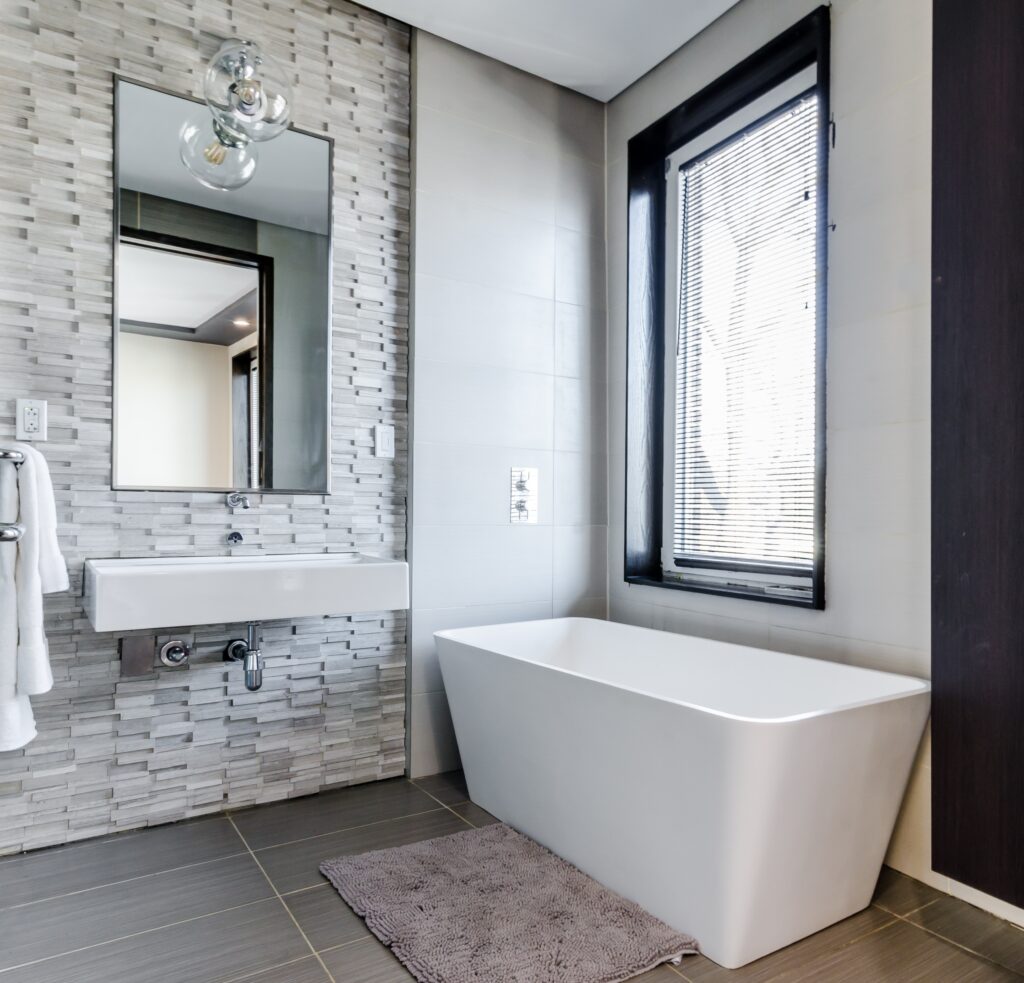
Check Out Our Top Eco Friendly Product Picks On Amazon Here
Reducing energy consumption
Using LED or energy-efficient light bulbs
Lighting is an essential aspect of any bathroom, and by choosing the right bulbs, you can reduce energy consumption and lower your carbon footprint. LED (Light Emitting Diode) bulbs are an excellent eco-friendly lighting option for your bathroom. They are highly energy-efficient, have a long lifespan, and produce minimal heat. LED bulbs use significantly less energy than traditional incandescent or fluorescent bulbs, making them a sustainable choice. By replacing your bathroom bulbs with LED equivalents, you can enjoy bright and efficient lighting while saving energy and reducing electricity costs.
Installing motion-sensor lights
Another way to reduce energy consumption in the bathroom is by installing motion-sensor lights. These lights are equipped with sensors that detect movement, automatically turning on when someone enters the bathroom and turning off when there is no activity detected. By replacing traditional light switches with motion-sensor switches, you eliminate the need for manually turning on and off lights. This ensures that lights are not left on unnecessarily, leading to substantial energy savings over time. Motion-sensor lights are especially useful for bathrooms that are frequently used or that have multiple users.
Insulating hot water pipes
Insulating your hot water pipes is a simple yet effective way to reduce energy waste in your bathroom. Hot water pipes that are not insulated can lose heat as the water travels from the water heater to the faucets and showerheads. This results in longer wait times for hot water and increased energy consumption to reheat the water. By insulating the pipes, you can minimize heat loss and ensure that hot water reaches its destination faster. Pipe insulation is readily available at hardware stores and can easily be installed with minimal effort. By reducing heat loss, you not only save energy but also reduce water wastage while waiting for hot water to arrive.
Proper waste management
Installing a dual flush toilet
While we previously mentioned dual flush toilets as a water-saving fixture, it is worth highlighting their importance in proper waste management as well. Dual flush toilets not only allow you to choose the appropriate amount of water for flushing, but they also have specialized flush mechanisms that effectively remove waste. This helps prevent clogging and reduces the need for excessive flushing. By investing in a dual flush toilet, you can minimize water waste and contribute to proper waste management in your bathroom.
Using natural and biodegradable cleaning products
Using natural and biodegradable cleaning products is not only better for the environment, but it also prevents the introduction of harmful chemicals into your bathroom. Many conventional cleaning products contain harsh chemicals and toxins that can be detrimental to your health and the environment. Instead, opt for natural alternatives like vinegar, baking soda, and eco-friendly cleaning solutions. These products are effective, safe to use, and do not contribute to water pollution or harm aquatic life. By making this simple switch, you can maintain a clean and eco-friendly bathroom.
Recycling bathroom waste
Proper waste management extends beyond just cleaning products. Recycling bathroom waste plays a significant role in minimizing your environmental impact. Make sure to separate recyclable items such as plastic bottles, cardboard packaging, and paper towels from general waste. Consider placing separate recycling bins in your bathroom to make recycling convenient and ensure that recyclable items don’t end up in landfills. By recycling bathroom waste, you contribute to the circular economy, reduce landfill waste, and help conserve natural resources.
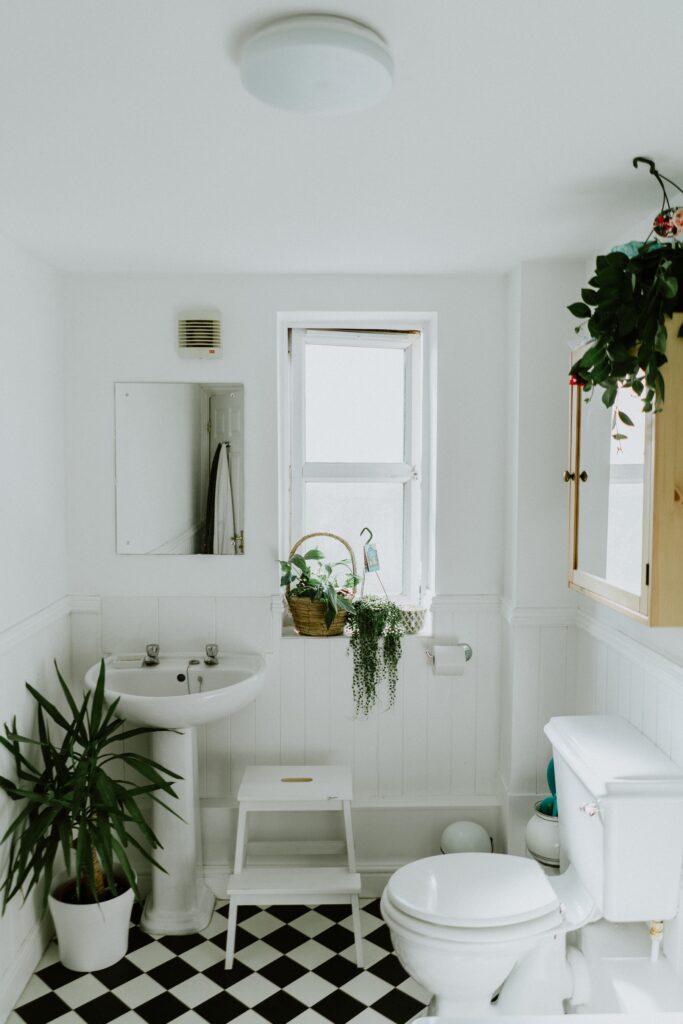
Maximizing natural light and ventilation
Installing larger or additional windows
One of the simplest ways to maximize natural light and ventilation in your bathroom is by installing larger or additional windows. Windows allow natural light to enter the space, reducing the need for artificial lighting during the day. They also provide an opportunity for improved ventilation, which helps prevent moisture buildup and the growth of mold and mildew. When choosing windows for your bathroom, consider energy-efficient options that provide insulation and contribute to energy savings in the long run. By maximizing natural light and ventilation, you create a more comfortable and eco-friendly bathroom.
Using sheer or light-colored window coverings
To make the most of natural light in your bathroom, consider using sheer or light-colored window coverings. Sheer curtains or blinds allow sunlight to filter through while still providing privacy. Light-colored window coverings reflect light, making the bathroom appear brighter and more spacious. By using these types of window coverings, you can reduce the need for artificial lighting during the day and create a warm and inviting atmosphere in your bathroom.
Installing a ventilation fan
Proper ventilation is essential to prevent moisture buildup and maintain good indoor air quality in your bathroom. Installing a ventilation fan can help remove excess humidity, odors, and pollutants from the air, improving the overall comfort and health of the space. Look for energy-efficient ventilation fans that are designed specifically for bathrooms and have a low noise level. Ensure that the fan is properly sized for your bathroom to effectively remove moisture and prevent the growth of mold and mildew. By incorporating a ventilation fan into your bathroom design, you promote a healthier and eco-friendly environment.
Harvesting and reusing water
Installing a water-efficient showerhead
In addition to its water-saving benefits, a water-efficient showerhead can also be used to harvest and reuse water in your bathroom. By positioning a bucket or container under the showerhead while waiting for the water to warm up, you can collect the initial cold water that would otherwise go to waste. This water can then be repurposed for tasks like watering plants or flushing the toilet. By implementing this simple practice, you make the most of every drop of water and reduce your overall water consumption.
Using greywater for toilet flushing or plant watering
Greywater, which refers to wastewater from sources like sinks, showers, and washing machines (excluding toilets), can be reused for various purposes in your bathroom. With the help of a greywater system, you can collect, filter, and store greywater for later use. This treated greywater can then be redirected to flush toilets or irrigate plants. Utilizing greywater not only conserves water but also reduces the strain on local sewage systems and reduces the demand for freshwater. However, it is important to ensure that greywater is treated properly to avoid any health risks or contamination.
Harvesting rainwater for non-potable uses
Rainwater harvesting is another sustainable practice that can be incorporated into your bathroom. By installing a rainwater collection system, you can capture and store rainwater that falls on your roof. This collected rainwater can then be used for non-potable purposes like toilet flushing, cleaning, and watering plants. Using rainwater reduces the demand for treated water, conserves resources, and minimizes the strain on water supply infrastructure. However, it is important to check local regulations and guidelines regarding rainwater use and implement appropriate filtration systems to ensure the water is safe for the intended purposes.
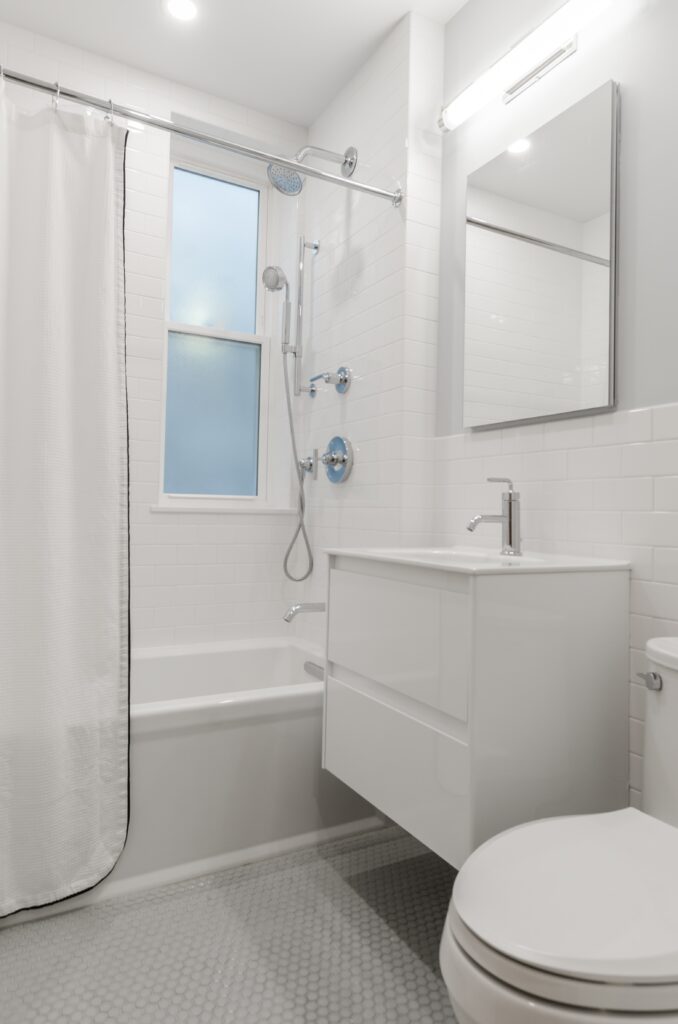
Using sustainable bathroom fixtures and fittings
Eco-friendly shower curtains
When choosing shower curtains for your bathroom, opt for eco-friendly options made from sustainable materials like organic cotton or hemp. These materials are biodegradable, renewable, and free from harmful chemicals. Avoid curtains made from PVC (polyvinyl chloride) or vinyl, as they are non-biodegradable and can release toxic chemicals into the environment. Choosing eco-friendly shower curtains promotes a healthier indoor environment and reduces your ecological footprint.
Bamboo or recycled plastic toothbrush holders
Toothbrush holders are a small but important aspect of your bathroom that can contribute to its eco-friendliness. Consider using toothbrush holders made from sustainable materials like bamboo or recycled plastics. Bamboo is a fast-growing and renewable resource, while recycled plastics reduce the amount of waste sent to landfills. By choosing these eco-friendly options, you can avoid unnecessary plastic waste and support sustainable production practices.
Sustainable towel and bathmat options
When it comes to towels and bathmats, opt for sustainable options made from organic cotton or bamboo fibers. Organic cotton is grown without the use of harmful pesticides and genetically modified organisms, making it a more eco-friendly choice. Bamboo fibers are highly renewable and have natural antimicrobial properties, making them an excellent alternative to conventional cotton. By choosing sustainable towels and bathmats, you promote responsible farming practices and reduce the environmental impact of your bathroom.
Reducing chemical usage
Avoiding harsh chemical-based cleaning products
Many conventional cleaning products contain harsh chemicals that can be harmful to your health and the environment. To reduce chemical usage in your bathroom, avoid using these products and opt for more natural alternatives. Simple ingredients like vinegar, baking soda, and lemon juice can effectively clean and disinfect various surfaces in your bathroom without introducing harmful toxins. Additionally, consider purchasing eco-friendly cleaning products that are specifically designed to be safe for human health and the environment.
Opting for natural alternatives like vinegar or baking soda
Vinegar and baking soda are versatile and eco-friendly cleaning agents that can replace many conventional cleaning products in your bathroom. Vinegar, with its mild acidity, can effectively remove stains, soap scum, and mineral deposits. Baking soda acts as a gentle abrasive and deodorizer, making it great for scrubbing surfaces and absorbing odors. By using these natural alternatives, you eliminate the need for harsh chemicals, reduce water pollution, and create a healthier environment in your bathroom.
Using eco-friendly personal care items
In addition to cleaning products, it’s important to consider the environmental impact of your personal care items. Many conventional personal care products contain ingredients that are harmful to both your health and the environment. When shopping for items like shampoo, conditioner, soap, and toothpaste, look for eco-friendly options that are free from harsh chemicals, microplastics, and synthetic fragrances. Choose products that are packaged in recyclable or biodegradable materials to further minimize your ecological footprint. By using eco-friendly personal care items, you promote sustainability and prioritize your well-being.
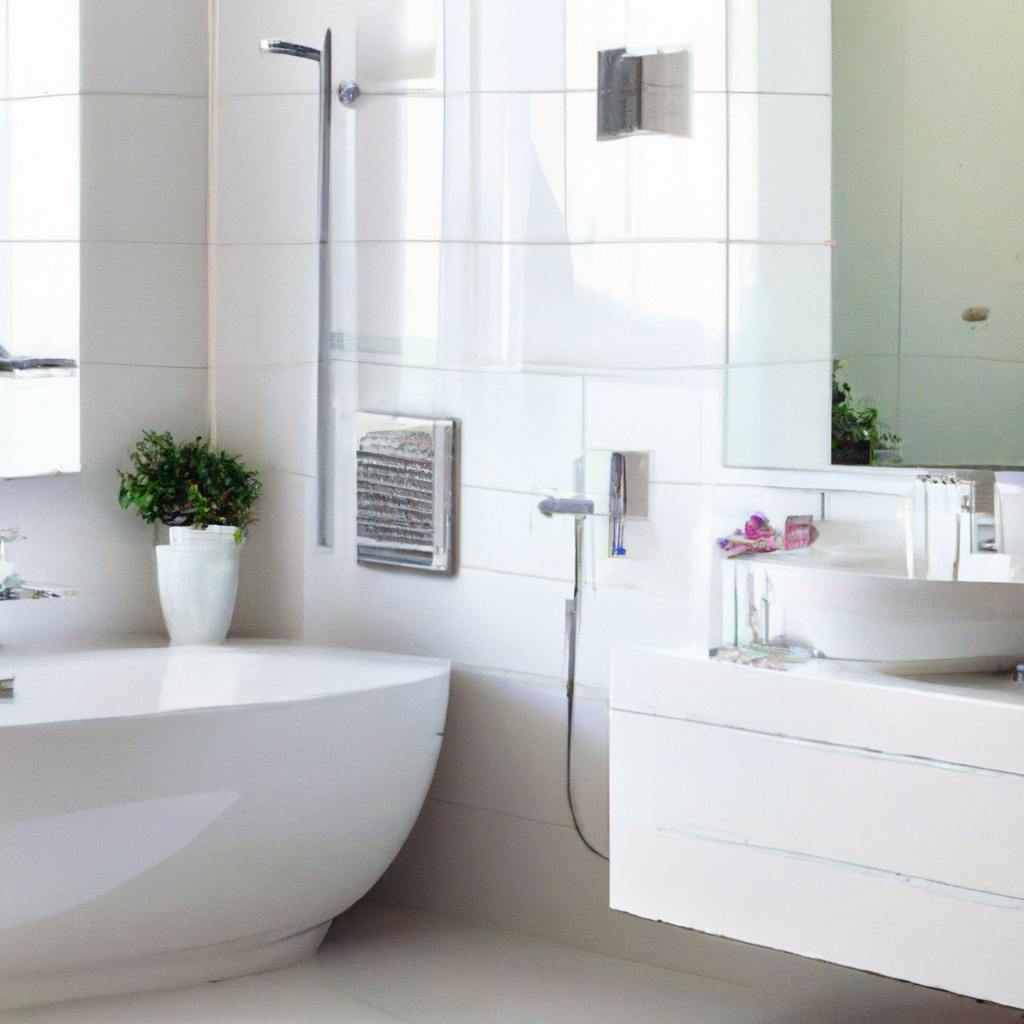
Effective insulation and heating
Insulating walls and windows
Proper insulation is crucial for energy efficiency and maintaining a comfortable environment in your bathroom. Insulating walls and windows can help prevent heat loss during colder months and reduce the need for excessive heating. Insulating materials like fiberglass, foam, or cellulose can be installed in the walls and window frames to create a thermal barrier. This helps retain heat and improve energy efficiency, leading to reduced energy consumption and lower heating costs.
Using energy-efficient heating methods
When it comes to heating your bathroom, consider using energy-efficient methods to reduce both your environmental impact and energy bills. Installing radiant floor heating or heated towel racks are examples of energy-efficient heating options. Radiant floor heating warms the bathroom from the floor up, providing comfortable and efficient heat distribution. Heated towel racks not only warm your towels but also contribute to maintaining the overall temperature of the bathroom. By utilizing these energy-efficient heating methods, you can create a cozy and sustainable bathroom environment.
Sealing gaps and cracks
Gaps and cracks in walls, windows, and doors can lead to air leaks and energy loss in your bathroom. By identifying and sealing these gaps, you can improve insulation, prevent drafts, and reduce the need for excessive heating. Seal gaps and cracks using weatherstripping, caulk, or expanding foam, depending on the size and location of the gaps. This simple step can help maintain a consistent temperature in your bathroom and minimize energy waste.
Incorporating sustainable design elements
Using reclaimed or recycled materials
Incorporating reclaimed or recycled materials into your bathroom design adds a unique and sustainable touch. Consider using reclaimed wood for vanity countertops or recycled glass tiles for backsplashes or shower walls. Reclaimed or recycled materials not only reduce waste but also add character and style to your bathroom. By giving these materials a second life, you contribute to resource conservation and create a more sustainable space.
Integrating plants for air purification
Plants not only add a touch of natural beauty to your bathroom but also help improve air quality by absorbing pollutants and releasing oxygen. Certain plants, like spider plants, peace lilies, and aloe vera, are particularly effective at purifying the air and thriving in low-light and humid conditions. By integrating plants into your bathroom design, you create a healthier and more eco-friendly environment.
Creating a minimalist and clutter-free space
Embracing a minimalist and clutter-free approach to your bathroom design can have a significant impact on sustainability. By keeping only essential items in your bathroom and minimizing excessive storage, you can avoid unnecessary waste and promote a more organized environment. Consider utilizing space-saving solutions like wall-mounted shelves or concealed storage to maximize functionality without compromising on the minimalist aesthetic. By creating a clutter-free space, you support a simplified lifestyle and reduce the environmental impact associated with unnecessary consumption.

